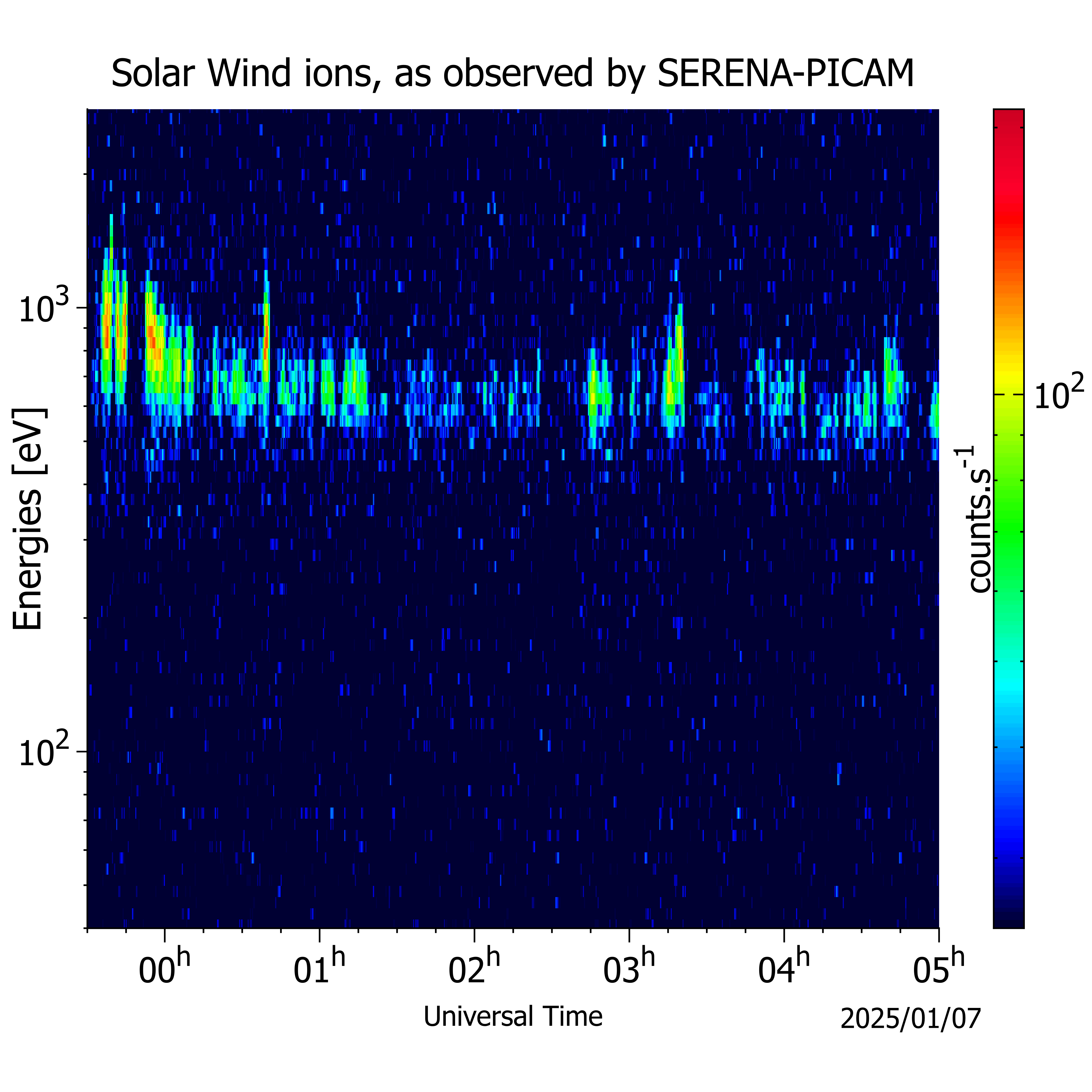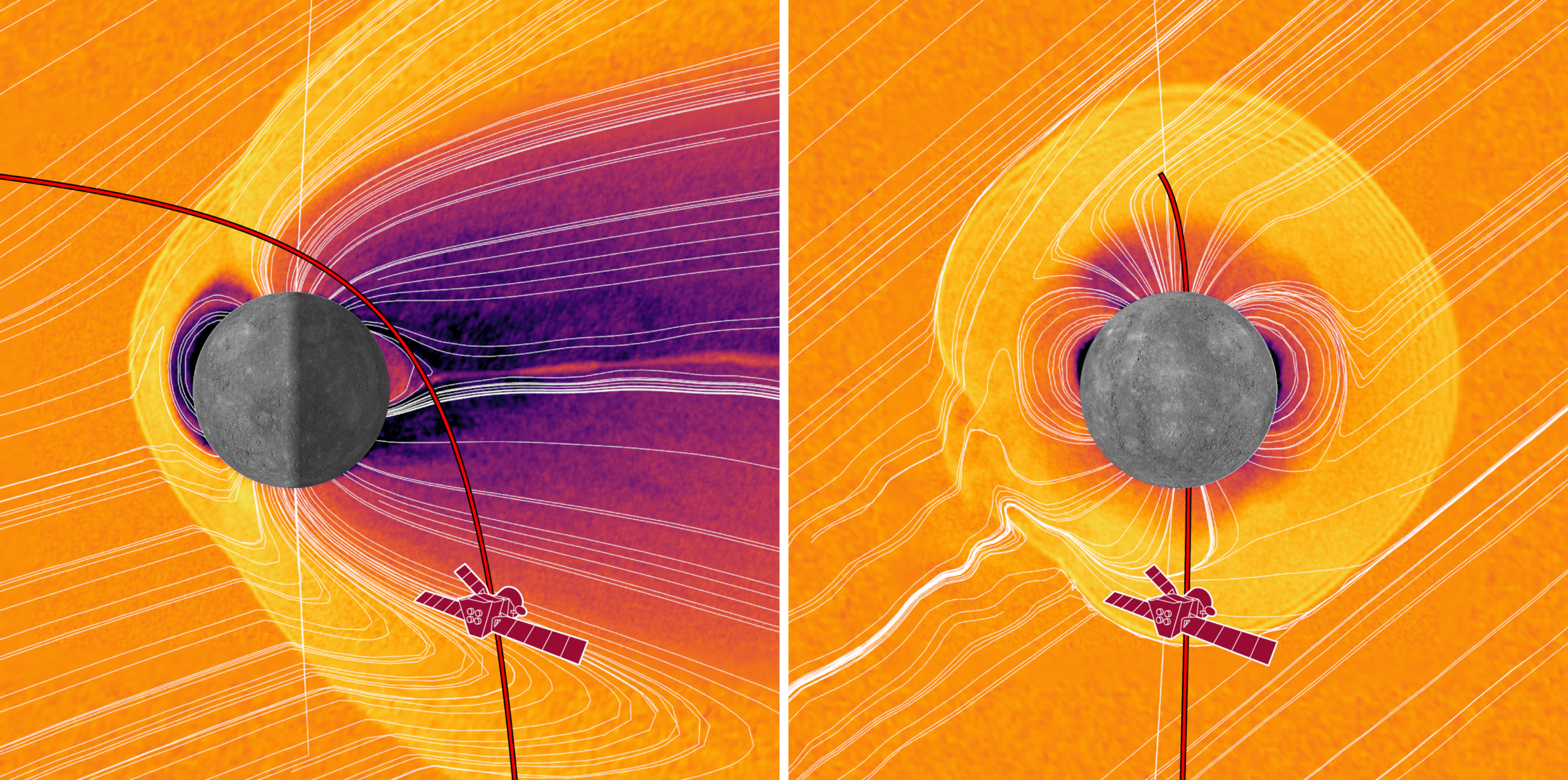Approaching Mercury for the sixth (and last) Flyby
08 January 2025
On 8 January 2025 at 06:59 CET (05:59 UTC), BepiColombo mission had its sixth and final flyby passing just 295 km above Mercury's surface at an altitude at closest approach of 295 km. This sixth and final flyby reduced the spacecraft’s speed and changed its direction, preparing it for entering in Mercury’s orbit in late 2026.
But, as usual, flybys are a great opportunity to take scientific data too, together with some images of Mercury before the beginning of the nominal mission.
PICAM and MIPA sensors were operative to measure the ion environment well before and after entering in the planetary magnetosphere.

In the image above a preview of the measurement performed by PICAM between 0 and 5 UT on Jan 7 is shown: the solar wind particles with typical energies (between 0.6 and 1 keV) are shown in the upper part of the image. Colors fromgreen to orange indicate the increasing number of particles/sec identified by the sensor. (credits: A.Varsani & PICAM team)
During the flyby, BepiColombo approached Mercury from the southern hemisphere, entered in the magnetosphere from the back side, come closer to the north polar region, passed above the magnetic cusps and exited toward the Sun.

Figure: the trajectory of the flyby around Mercury (red line) superposed to the simulation of the expected magnetosphere for the case of typical solar wind conditions. The left image shows a ‘side view’ where the Sun is out of frame to the left; the right image shows a ‘front view’ as if we are looking at Mercury from the Sun. The simulation is based on a model; it does not show real observations. The colors indicate the density of charged particles around Mercury, with the highest density shown in yellow and the lowest density in purple/black. The white lines are magnetic field lines. (The near-vertical lines extending from the planet’s poles are numerical artefacts and should be ignored.) The undisturbed solar wind appears dark orange. (credits: Willi Exner – ESA & TU Braunschweig)
Both SERENA ion sensors obtained interesting data during the passage showing ion populations in the nightside close to the surface and in the dayside above the cusp and in the magnetosheath. Data are now under analysis.
ESA news on this flybys can be found
here and
here.



